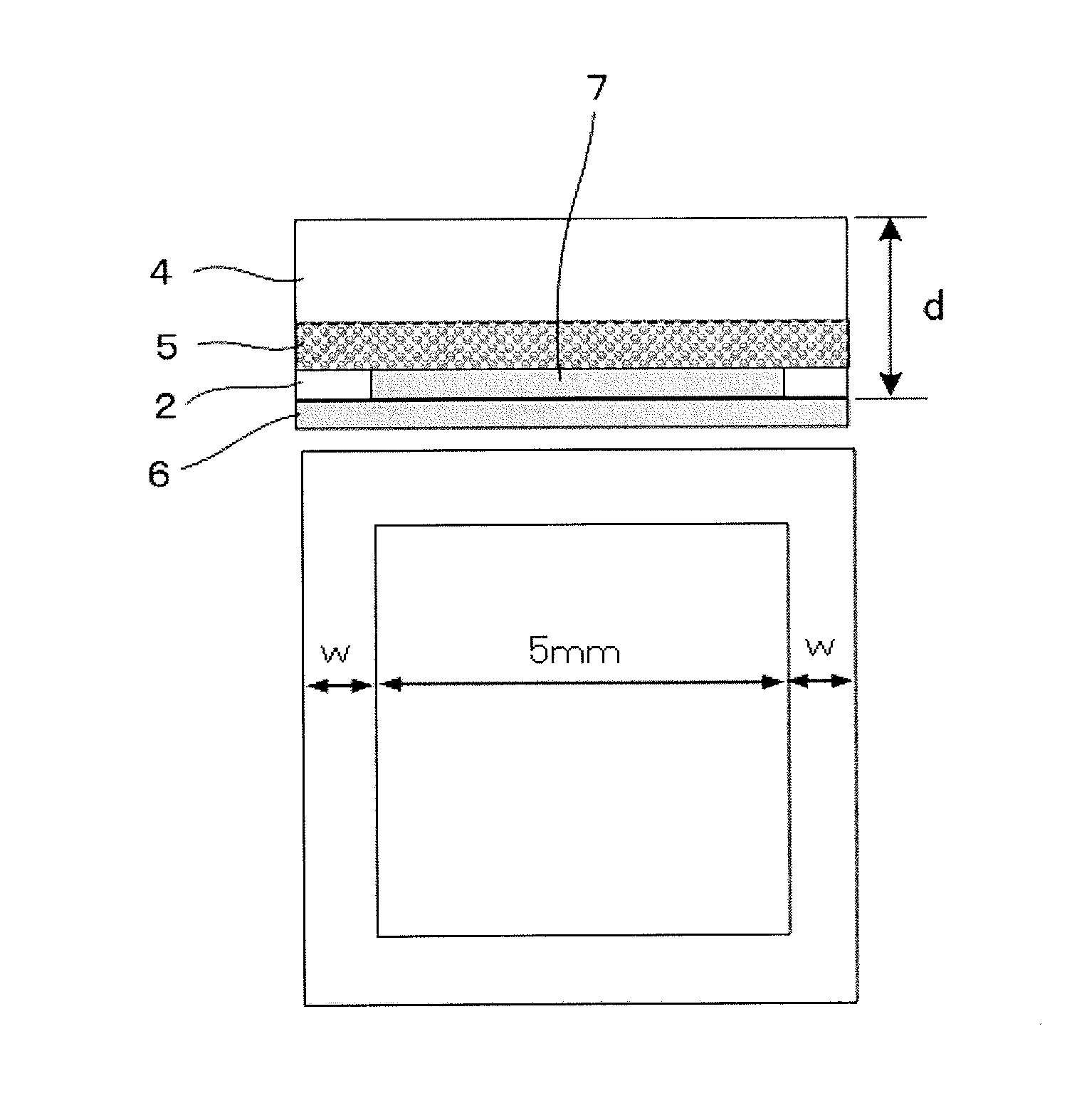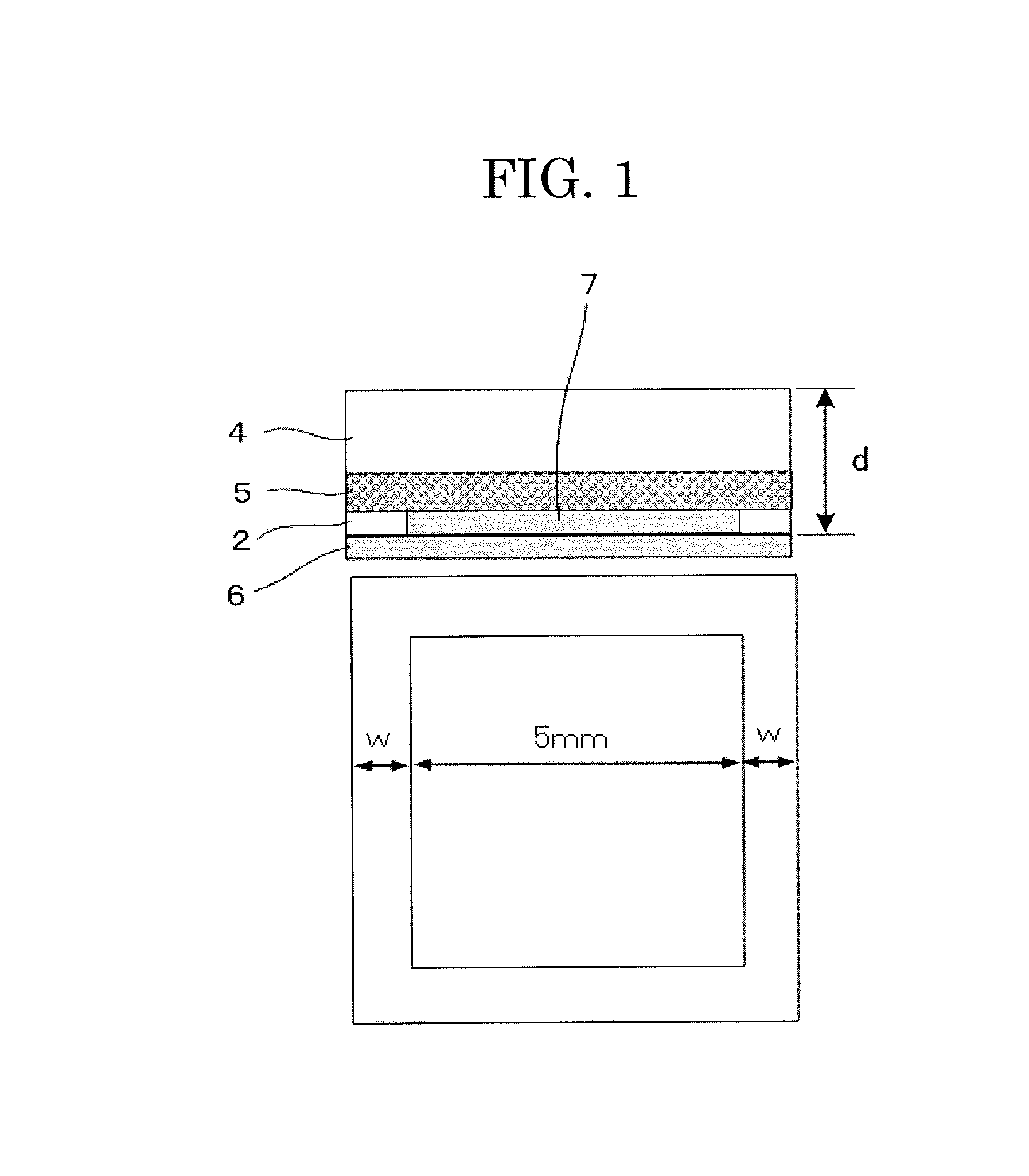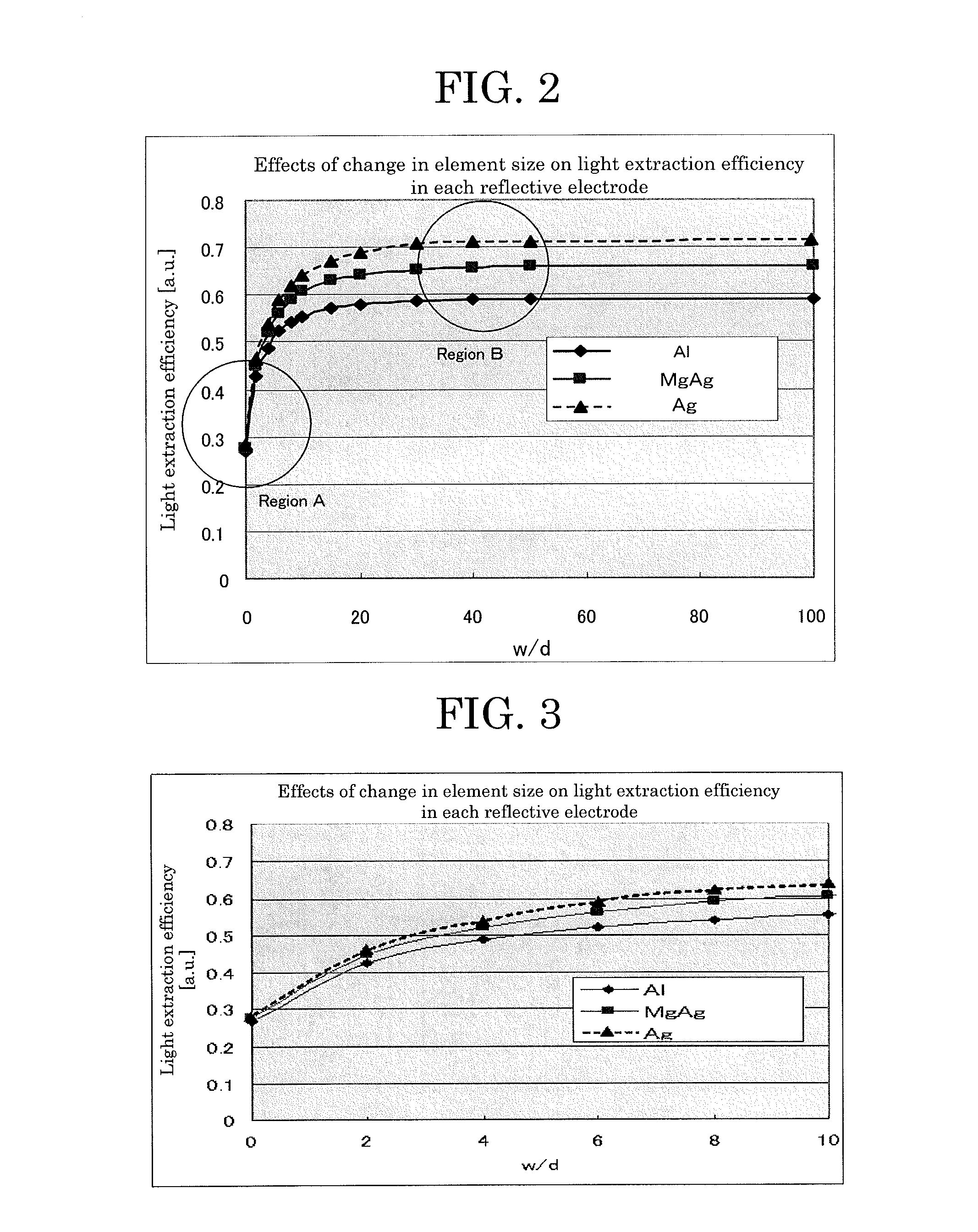Organic Electroluminescent Device
- Summary
- Abstract
- Description
- Claims
- Application Information
AI Technical Summary
Benefits of technology
Problems solved by technology
Method used
Image
Examples
example 1
[0249]—In each reflective electrode, effects on the light extraction efficiency when the size of the effective light-emitting region is changed with respect to the thickness of the element—
>
[0250]As depicted in FIG. 1, a specific configuration of the simulation model is as follows:
air / transparent substrate 4 (refractive index ns=1.5, attenuation coefficient k=0, thickness: 1 mm) / fine particle layer 5 (polystyrene fine particles: average particle diameter φ=2 μm, refractive index np=1.59, attenuation coefficient k=0, filling rate by volume n=50%; polymer: refractive index nb=1.8, attenuation coefficient k=0, thickness=15 μm) / organic electroluminescent layer 2 (refractive index n=1.8, attenuation coefficient k=0, thickness: 0.2 μm) / composite reflective layer 6 (Ag: reflectivity 0.87, MgAg: reflectivity 0.83, Al: reflectivity 0.77, thickness: 100 nm).
[0251]Using commercially available ray-tracing software (ZEMAX-EE, product of ZEMAX Development Corporation), simulation was performed ab...
example 2
[0257]—In each reflective electrode, optimization of the fine particle layer in terms of the refractive index of the polymer, the average particle diameter of the fine particles, and the filling rate by volume of the fine particles—
>
[0258]Using commercially available ray-tracing software (ZEMAX-EE, product of ZEMAX Development Corporation), simulation was performed about the effects on the light extraction efficiency by changing the parameters of the fine particle layer. Here, based on the point at which the light extraction efficiency in the case of the Ag reflective electrode, the MgAg reflective electrode or the Al reflective electrode stopped increasing in FIG. 2 of Simulation 1, the effective light-emitting region is a mm×5 mm square and the entire element is a 40 mm×40 mm square.
(1) Model where the Fine Particle Layer is Absent (See FIG. 5)
[0259]Air / transparent substrate 4 (BK7, product of OHARA INC., refractive index n=1.5, attenuation coefficient k=0, thickness=1 mm) / organic...
PUM
 Login to View More
Login to View More Abstract
Description
Claims
Application Information
 Login to View More
Login to View More - R&D
- Intellectual Property
- Life Sciences
- Materials
- Tech Scout
- Unparalleled Data Quality
- Higher Quality Content
- 60% Fewer Hallucinations
Browse by: Latest US Patents, China's latest patents, Technical Efficacy Thesaurus, Application Domain, Technology Topic, Popular Technical Reports.
© 2025 PatSnap. All rights reserved.Legal|Privacy policy|Modern Slavery Act Transparency Statement|Sitemap|About US| Contact US: help@patsnap.com



